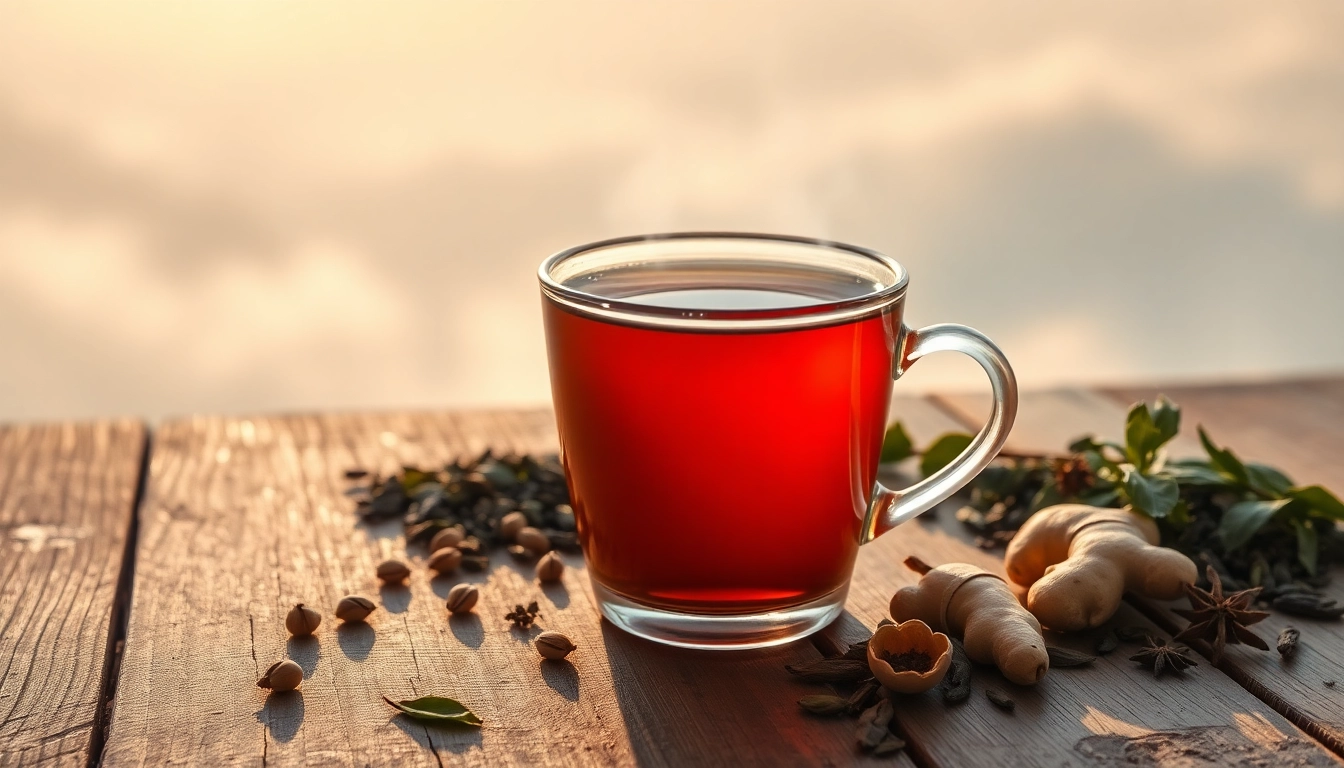What is Nepali Tea? Understanding Its Unique Characteristics
Nepali tea is a delightful beverage made from the leaves of the tea plant, Camellia sinensis, that thrives in the rich soil and unique climate of Nepal. Known for its distinctive flavors and aromas, Nepali tea is often compared to its much-acclaimed neighbor, Darjeeling tea, which is produced across the border in India. However, Nepali tea holds its own with unique characteristics that set it apart. This article explores the many facets of Nepali tea and its increasing popularity around the world. For those looking to explore the rich varieties of this exquisite beverage, the Nepali tea market offers an abundance of options.
The Origin of Nepali Tea and Its Cultivation
The origin of Nepali tea dates back to the early 19th century when a few tea bushes were brought from China to Nepal. The tea has flourished due to the ideal growing conditions found in the hilly regions of Nepal, particularly in districts like Ilam, Jhapa, and Dhankuta. High altitudes, abundant rainfall, and rich soil create an environment conducive to the production of high-quality tea.
In recent years, the Nepali tea industry has witnessed a revival, with small-scale farmers and women-led cooperatives taking charge of the cultivation and processing of tea. Sustainable farming practices are increasingly emphasized, ensuring that the rich biodiversity of the region is preserved while meeting the growing global demand for organic teas.
Key Varieties of Nepali Tea You Should Try
Nepali tea comes in various forms, each offering a different taste experience. Here are some key varieties that deserve a spot on your tea shelf:
- Black Tea: Known for its robust flavor and darker hue, Nepali black tea is often compared to Darjeeling tea with its muscatel notes. Notable brands include Ilam Tea and Nepal Tea Collective.
- Green Tea: This tea variety is less oxidized, offering a fresher, lighter flavor that appeals to many health-conscious drinkers. It is characterized by vegetal notes and a refreshing finish.
- White Tea: One of the least processed teas, Nepali white tea is often considered a delicacy, prized for its lightness and subtle floral flavors.
- Oolong Tea: Combining the qualities of black and green tea, this semi-oxidized tea offers a complex taste profile, often with fruity or nutty undertones.
Comparing Nepali Tea to Other Famous Teas
When comparing Nepali tea to more globally recognized varieties such as Indian Assam or Chinese Longjing, several factors come into play:
- Flavor Profile: Nepali tea is often described as having a floral, fruity character, slightly reminiscent of Darjeeling. However, its flavors can be more delicate with fresh grassy notes in the green teas.
- Aroma: The aroma of Nepali tea varies from sweet and fruity in black teas to fresh and grassy in green teas, which can stand out more sharply compared to stronger traditional teas.
- Health Benefits: Like many high-quality teas, Nepali varieties are rich in antioxidants and have a range of health benefits associated with their consumption.
The Brewing Process: How to Prepare the Perfect Cup of Nepali Tea
Brewing the perfect cup of Nepali tea is an art that balances time, temperature, and the quality of the leaves. Whether you are preparing black, green, or oolong tea, it is essential to follow the right steps to ensure you extract the maximum flavor and benefits from the leaves.
Essential Ingredients for Brewing Nepali Tea
To brew a delicious cup of Nepali tea, you will need:
- Nepali tea leaves: Choose the variety that suits your palette.
- Filtered water: Clean, fresh water is crucial for brewing.
- Optional ingredients: Sugar, honey, milk, or spices (such as cardamom or ginger) depending on your preference.
Step-by-Step Guide for Brewing and Serving
Here is a comprehensive guide to brewing different types of Nepali tea:
- Select Your Tea: Choose the type of Nepali tea you want to brew.
- Measure the Leaves: Use about 1-2 teaspoons (2-4 grams) of tea leaves per cup.
- Boil Water: Bring water to the appropriate temperature (typically 190°F/88°C for black tea and 175°F/80°C for green tea).
- Steep: Pour the hot water over the tea leaves and let it steep as follows:
- Black Tea: 4-5 minutes
- Green Tea: 2-3 minutes
- Oolong Tea: 3-5 minutes
- Strain and Serve: Remove the tea leaves using a strainer and pour into your favorite cup. Add any desired sweeteners or milk.
Common Mistakes to Avoid While Brewing
To perfect your brewing skills, avoid these common pitfalls:
- Using water that is too hot can scorch delicate green teas.
- Oversteeping can lead to bitterness, especially in black teas.
- Failing to use quality water can affect the taste significantly.
The Health Benefits of Nepali Tea: A Natural Brew
Nepali tea is not just beloved for its taste but also for an impressive array of health benefits:
Antioxidant Properties and Wellness Benefits
Rich in polyphenols and antioxidants, Nepali tea can contribute to improved heart health, better digestion, and stronger immunity. Studies show that the antioxidants in tea can reduce oxidative stress, which is a contributing factor to many chronic diseases.
How Nepali Tea Can Boost Your Energy Levels
The caffeine content in black and oolong teas can provide a natural boost of energy. Many tea drinkers find that they can enjoy the invigorating benefits of caffeine without the jitteriness often associated with coffee.
Incorporating Nepali Tea into a Healthy Lifestyle
Incorporating Nepali tea into your daily routine is simple. Consider replacing sugary beverages with a cup of flavorful Nepali tea. It’s not only a healthier option but can also enhance your hydration. Pairing tea with a meal, as done in many cultures, can also aid digestion.
Cultural Significance of Nepali Tea: More Than Just a Beverage
The importance of tea in Nepali culture extends beyond its consumption; it plays a significant role in hospitality, tradition, and community.
The Role of Tea in Nepali Hospitality
In Nepal, offering tea is a symbol of hospitality. Guests are welcomed with a steaming cup of tea, which serves as a gesture of warmth and acceptance. It is particularly true in rural areas, where tea culture binds communities together.
Traditional Rituals and Celebrations Involving Nepali Tea
Various festivals and family gatherings involve sharing tea. For example, during Dashain, families come together to celebrate and share cups of tea, fostering bonds among relatives and friends.
Stories and Folklore Related to Nepali Tea
Nepali tea is often the centerpiece of stories and folklore passed down through generations. Many tales revolve around tea’s role in community gatherings, fortifying friendships, and resolving conflicts.
Best Places to Buy Quality Nepali Tea Online
For those interested in exploring the world of Nepali tea further, purchasing from reputable online retailers can ensure quality and sustainability. Here are some recommendations:
Top Brands and Their Unique Offerings
Brands like Nepali Tea Traders offer a selection of organic teas sourced directly from the farms in Ilam, ensuring freshness and authenticity. Other notable vendors include the Nepal Tea Collective, known for its loose leaf offerings and commitment to sustainable practices.
How to Spot Authentic Nepali Tea
When purchasing Nepali tea, pay attention to key indicators of authenticity:
- Check for certification labels such as ‘organic’.
- Read reviews from other customers to gauge quality.
- Be wary of extremely low prices, which can indicate compromised quality.
Comparative Analysis of Prices Across Online Retailers
Prices for Nepali tea can vary widely between different online retailers. Generally, expect to pay anywhere from $10 to $30 per pound for premium quality loose leaf teas. Checking multiple sites and comparing shipping options can help you find the best deal.



